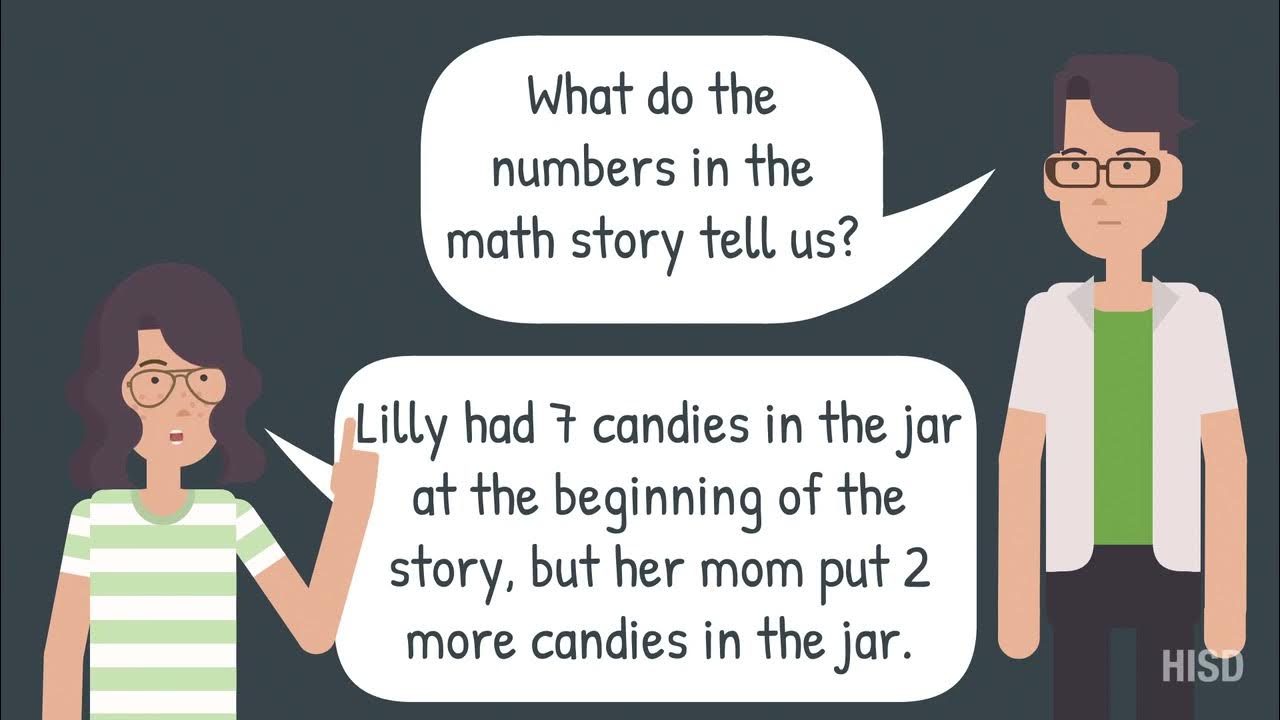Using Math Problem Solving and Student Discourse
Summary
TLDRThe transcript details a classroom lesson focused on solving the problem of finding three consecutive integers that sum to 81. The teacher encourages students to explore various methods, including trial and error and algebraic approaches, fostering a collaborative learning environment. Key concepts such as 'consecutive' and 'sum' are defined, and students share their thought processes, demonstrating the value of different strategies. Through active engagement and peer discussion, the lesson aims to deepen students' understanding of translating word problems into algebraic expressions, ultimately reinforcing critical thinking and problem-solving skills.
Takeaways
- 😀 The lesson focuses on finding three consecutive integers that sum to 81.
- 🤔 Understanding key terms like 'consecutive' and 'sum' is essential for solving the problem.
- 📝 Students are encouraged to attempt the problem independently before discussing their strategies.
- 💬 The teacher promotes a collaborative learning environment by allowing students to share their different problem-solving methods.
- 🔄 Multiple approaches to the same problem are validated, demonstrating that various methods can lead to the correct answer.
- 📚 Translating word problems into algebraic expressions is a key objective of the lesson.
- ➕ The algebraic representation involves defining three integers as n, n+1, and n+2.
- 🔍 The lesson emphasizes the importance of breaking down problems into manageable parts for easier understanding.
- 👥 Student engagement is fostered through group discussions and presentations of their methods on the board.
- ✨ The overall focus is on building relational understanding, which contributes to greater student achievement in mathematics.
Q & A
What is the main problem presented in the lesson?
-The main problem is to find three consecutive integers whose sum is 81.
How does the teacher engage students at the beginning of the lesson?
-The teacher asks students to attempt the problem in any way they choose and encourages them to think about the meaning of 'consecutive'.
What does the teacher emphasize about the term 'consecutive'?
-The teacher explains that consecutive integers are numbers that follow one another in order, such as 1, 2, and 3.
What method does one group use to solve the problem algebraically?
-One group uses variables to represent the integers, defining them as n, n+1, and n+2.
What strategies do students use to find the sum of the integers?
-Students employ various strategies, including trial and error, common sense calculations, and algebraic methods.
How does the teacher facilitate understanding among students?
-The teacher promotes class discussions, allows students to explain their methods, and values different approaches to the problem.
What role does vocabulary play in the lesson?
-The teacher focuses on key vocabulary like 'consecutive' and 'sum' to ensure students understand the problem context.
What is the significance of student representation in problem-solving?
-By having representatives from each group explain their methods, the teacher highlights the diversity of thought and encourages peer learning.
What final steps does the teacher take to confirm the solution?
-The teacher encourages students to substitute their found values back into the expressions to check their answers.
How does the teacher ensure all students participate?
-The teacher actively invites different students to share their thoughts and solutions, fostering an inclusive classroom environment.
Outlines

This section is available to paid users only. Please upgrade to access this part.
Upgrade NowMindmap

This section is available to paid users only. Please upgrade to access this part.
Upgrade NowKeywords

This section is available to paid users only. Please upgrade to access this part.
Upgrade NowHighlights

This section is available to paid users only. Please upgrade to access this part.
Upgrade NowTranscripts

This section is available to paid users only. Please upgrade to access this part.
Upgrade NowBrowse More Related Video

Solving Problems Involving Quadratic Equations and Rational Algebraic Equations (Part 1)

Solving Addition Math Problems | Elementary Math

tripel pythagoras kelas 8 part 2 (mudah) dan menentukan jenis segitiga - Abi Muis Math

04 Andy Brown Translanguaging A multilingual Learning

PRAKTEK KETERAMPILAN MEMBUKA DAN MENUTUP PEMBELAJARAN

Math 8 | Quarter 1- Week 2 | Solving Problems Involving Factors of Polynomials | Acute Angels TV
5.0 / 5 (0 votes)